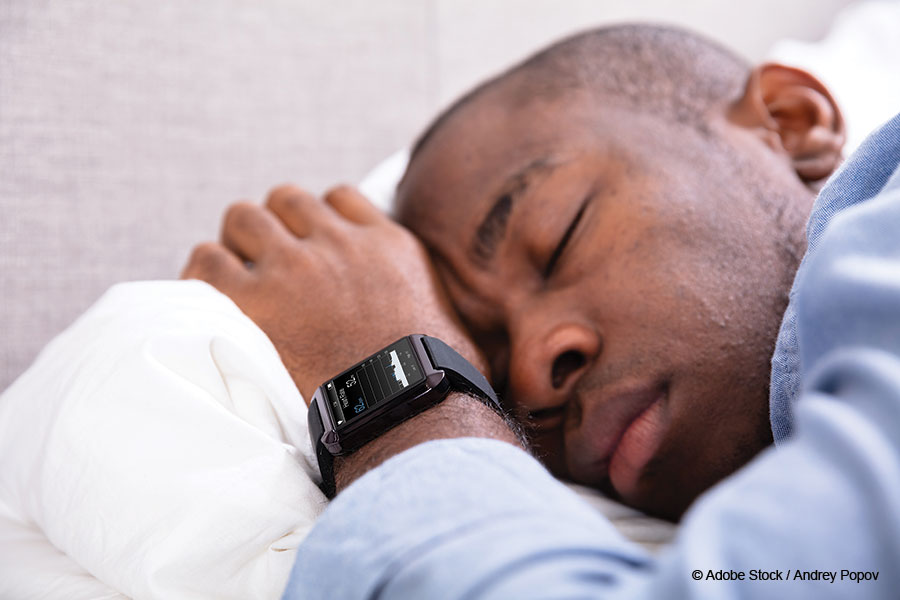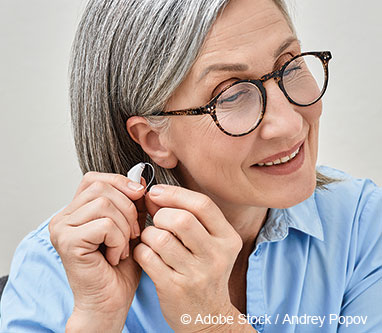 When over-the-counter (OTC) hearing aids debuted two years ago, Justin S. Golub, MD, MS, an otology specialist and associate professor of otolaryngology–head and neck surgery at Columbia University in New York, was enthusiastic. Here was a chance to give greater accessibility to a huge swath of people with mild to moderate hearing loss who could really benefit from assistance with their hearing but who are not inclined to go through the whole process of being examined and then fitted for a prescription hearing aid.
When over-the-counter (OTC) hearing aids debuted two years ago, Justin S. Golub, MD, MS, an otology specialist and associate professor of otolaryngology–head and neck surgery at Columbia University in New York, was enthusiastic. Here was a chance to give greater accessibility to a huge swath of people with mild to moderate hearing loss who could really benefit from assistance with their hearing but who are not inclined to go through the whole process of being examined and then fitted for a prescription hearing aid.
Explore This Issue
December 2024Dr. Golub—along with the wider otolaryngology community—thought it was a great opportunity.
At the same time, he looked around at all the people wearing white Apple earbuds for their phone calls and music—on city streets, in subways, in shops and restaurants—and he thought, Hmm, maybe those could be used as hearing aids, too.
With Apple’s recent announcement that the AirPods Pro 2 will gain a function as a hearing aid—as well as a hearing test—Dr. Golub and other hearing specialists have gotten their wish.
“This Apple announcement, in my opinion, is the most exciting thing to happen since over-the-counter hearing aids came out about two years ago,” he said. “From the very beginning, we were hoping that Apple would enter the market. They finally now have.”
The hearing aid news came alongside an announcement that the Apple Watch will now be able to track breathing disturbances and alert users that they may have sleep apnea.
The tech behemoth’s grand strides into the hearing aid and sleep apnea arena are major milestones in the increasing “over-the-counterization” of otolaryngology care, joining the already available no-prescription-required hearing devices, wearable apps, and gadgets,
as well as sleep strips and mouthpieces for breathing during sleep.
 But, while the products will provide greater access, the impact, experts say, will require a culture shift, the details of which are unknown, and, particularly in the case of the watch’s apnea feature, could place a huge burden on the sleep care community and even run the risk of having negative impacts on some patients, they said.
But, while the products will provide greater access, the impact, experts say, will require a culture shift, the details of which are unknown, and, particularly in the case of the watch’s apnea feature, could place a huge burden on the sleep care community and even run the risk of having negative impacts on some patients, they said.
“There’s a need to identify sleep apnea because it is an epidemic,” said Eric Gantwerker, MD, MSc, MS, a pediatric otolaryngologist at Cohen Children’s Hospital at Northwell Health in New Hyde Park, N.Y., who has also treated adults and closely follows tech advances in otolaryngology. “And so, I think everybody’s just trying to get access to that market and trying to basically make a dent in identifying sleep apnea.”
But, he said, “You’re going to have a lot of the worried well showing up, and basically what that does is it floods the physicians, or it floods the clinics with lots and lots of worried well. And that’s always going to be my concern about any consumer-level screening product.”
Apple reports that its hearing aid feature was evaluated in a clinical study with 118 subjects with perceived mild to moderate hearing loss at several U.S. sites, and that those who used the self-fitting strategy had a similar benefit to those who had the same device fitted by a professional. Tests that measured amplification levels in the ear canal and for speech understanding in noise showed comparable performance (U.S. Food and Drug Administration. https://www.fda.gov/news-events/press-announcements/fda-authorizes-first-over-counter-hearing-aid-software).
The results appeared similar to a JAMA Otolaryngology-Head and Neck Surgery randomized clinical effectiveness trial on OTC hearing aids that found that those that were self-fitted using the remote assistance supplied by the manufacturer produced similar outcomes at six weeks to the same devices fitted by an audiologist (JAMA Otolaryngol Head Neck Surg. doi:10.1001/jamaoto.2023.0376).
Sujana Chandrasekhar, MD, partner at ENT and Allergy Associates in New York and Parsippany, N.J., and past president of the American Otological Society and American Academy of Otolaryngology-Head and Neck Surgery, said AirPods hearing aids, which would use Apple’s hearing test as a guide to suit an individual’s hearing, will likely be a big boost to the OTC hearing aid concept, which has been helpful but hasn’t brought as much transformation as had been hoped.
“By providing a modicum of a hearing threshold test, and by looking like something people want to wear, the new AirPods technology may be better adopted,” she said. “Hearing aids”—whether OTC or prescribed—“that are not correct for one’s hearing loss [are] the easiest way to fall into a non-use pattern.”
She views OTC hearing aids “as I do reading glasses, which correct for mild vision loss, and then prepare the individuals for more interactive ophthalmology and optometry care,” she said. Before OTC devices, only about a third of those over 70 who could benefit from hearing aids actually had them, and fewer than one in five of those 20 to 69 years old, she said (National Institute on Deafness and Other Communication Disorders. https://www.nidcd.nih.gov/health/statistics/quick-statistics-hearing). And the OTC hearing aids have been of variable quality, often with price tags that discourage or even preclude use, experts said. Therefore, Dr. Chandrasekhar said, the huge market of potential users “has not really been budged yet” by OTC hearing aids.
The stigma issue could start to abate with the AirPods, she said.
“It used to be a stigma to wear glasses; then the OTC readers came out and first they had very thin frames, trying to be invisible,” she said. “I wear readers now, and they are bright and colorful and very visible on my face—ditto for my husband’s and son’s prescription eyeglasses. In that same vein, I think pretty, effective, not-too-expensive OTC hearing aids will break the stigma of hearing loss and encourage people to enjoy hearing to the fullest.”
Dr. Golub said the hope for OTC hearing aids was that they would be priced below $1,000, and ideally below $500, but most of the better ones are not.
“Kind of interestingly,” he said, although Apple products are usually priced at a premium, the price of the Apple hearing aid “is the price of an AirPods Pro 2, which is $250, which is very cheap for an over-the-counter hearing aid.”
“If it is decent,” he said, “it’s exciting for multiple reasons,” not the least of which is that there are about 100 million AirPods users worldwide, although that isn’t specifically the AirPods Pro 2 users.
OTC hearing aids have helped increase awareness of hearing loss and destigmatized hearing aids to an extent, but not enough, he said.
“Definitely the uptake has not been as good as we would hope, but that’s not surprising because it’s relatively early on; it’s only been a couple of years,” he said.
The entrance of AirPods into the market flips the image issue on its head, he said.
“AirPods are white, the most obvious color, on purpose—they’re designed to stand out; they’re not designed to blend in,” he said. “And so I’m very excited to see where this all goes, because Apple has taken a consumer electronic product that is designed to be flashy and obvious and added a hearing aid feature to it. Hearing aid features are typically supposed to be opposite—invisible.”
Dr. Gantwerker said that some people, thus far, haven’t wanted to use an OTC hearing aid, no matter the price.
You’re going to have a lot of the worried well showing up, and basically what that does is it floods the physicians, or it floods the clinical arena with lots and lots of worried well. And that’s always going to be my concern about any consumer-level product. —Eric Gantwerker, MD, MSc, MS